* Text informed by Bill Sulzman, Citizens for Peace in Space, Colorado on Sept. 13, 2009
AFA cadets learn to fly planes half a world away
September 11, 2009 5:35 PM
TOM ROEDER
THE GAZETTE
Welcome to the 21st century of aerial combat. Cockpits have become cubicles and airborne robots controlled by airmen half a world away are doing the fighting.
It’s a future the Air Force Academy is preparing cadets for, even if a lot of them long for the good old days of supersonic aerobatics.
“You talk to a kid who has seen ‘Top Gun’ 25 times and tell them they’re going to fly an unmanned aircraft, they are not going to be happy,” said Lt. Col. Dean Bushey, who is leading a class of 12 cadets into the Air Force’s new robotic world.
Every other day, the cadets gather at a training area on the south side of Fort Carson to learn skills that weren’t high-profile until the 9/11 terrorist attacks prompted the invasion of Afghanistan and put satellite-controlled planes on front lines.
Now, the Air Force’s Predator and Reaper drones have been so stellar in spying on insurgents and killing them with missiles, that Defense Secretary Robert Gates has said the F-35 fighter now in production may be the last fighter the Air Force buys that carries a pilot.
That doesn’t mean the remote planes are super stars at the Air Force Academy, where the cadet wing’s favorite acronym is IHTFP for “I’m here to fly planes.”
“There are some who are against the whole concept,” said drone flyer in training Rocco LiBrandi, a sophomore.
The history of unmanned American warplanes dates to World War II, when generals pushed the idea of using old bombers loaded with explosives to take out targets by remote control.
In the 1950s, the drones were used as targets for fighter pilots. In the 1960s and 1970s, drones were used for spying over China and Vietnam. The systems became more common in the 1980s, and one drone launched from a battleship in the 1991 Persian Gulf War became famous when Iraqis tried to surrender to it.
Advancements in electronics and communication gear allowed the drones to do more by 2001. Instead of shooting film for later review on the ground, the drones now send live video. They’re also armed with the Hellfire missile, which can vaporize a truck or send a tank turret airborne.
The key to the advancement has been satellite control, which allows airmen in Nevada and California to control the planes over the Middle East from computer terminals, where they use the drone’s cameras to watch the ground and on-board sensors to monitor speed, altitude and flight path.
Friday morning, cadets were doing the same thing, although their battlefield was Fort Carson’s training area and their plane was the 15-foot-long Viking, an unarmed drone about half the size of the Air Force Predator.
The class is unlike any other at the academy. There are no textbooks. Instead of learning theory, cadets are flying the Viking and searching for targets, most often classmates acting as the enemy.
It’s even more exciting than jumping out of planes, one said.
“You have a totally different experience here,” said cadet Christina England.
The academy is pushing cadets into the world of drones from the rivets up.
Engineering laboratories are dedicated to building the aircraft, including a 10-foot-long jet-powered test plane that will take to the air next year.
Researchers are studying tiny drones, figuring out what it will take to make a sparrow-sized spy plane that can haunt its unknowing prey.
All drones can do things that planes carrying pilots cannot. Combat drones of the future will be able to endure maneuvers that would kill humans. The tiny drones envisioned at the academy can sneak places no other craft could enter.
And drones don’t get funerals, they get replaced.
Tom McLaughlin, who runs the academy’s aerodynamic research laboratory, said cadets are fascinated with the technology that will change warfare in the future.
“It is the sort of thing you can see in the Air Force 10-20 years from now,” McLaughlin said of the tiny drones.
But cadets who dream of being pilots are still warming up to the thought of a cubicle-bound career, said Steve Brandt, a professor whose students are working on the jet-powered drone.
“I think they’re generally not very enthusiastic about that future, though we all see advantages to it,” Brandt said.
Monday, September 14, 2009
Tex Fwd: COLGAZETTE: AFA cadets learn to fly planes half a world away
Labels:
Predator,
Reaper,
Unmanned Aerial Vehicle (UAV)
Subscribe to:
Post Comments (Atom)

![[URGENT PLEA: In Update] EMERGENCY in GANGJEONG Since AUG. 24, 2011](http://2.bp.blogspot.com/-3iz8k-USXVY/TlmRYhhIYtI/AAAAAAAAL2c/9dbF85ZIkIs/s227/jejusit.jpg)
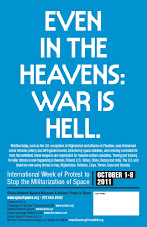
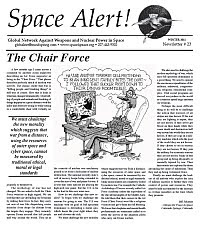

![[Solidarity from Japan for the Jeju] 253 individuals and 16 groups/organizations](http://2.bp.blogspot.com/_gnM5QlRx-4c/TR_YeNVE1yI/AAAAAAAAHWQ/ARyf6oQN0S0/S227/jeju_12_10j.jpg)

![[Translation] Korean organizations' statement: Immediately cancel the joint ROK-US drill Nov 26](http://2.bp.blogspot.com/_gnM5QlRx-4c/TPOE8VKXHFI/AAAAAAAAGlM/8lryt-8sFjc/S227/1.jpg)
![HOT! [Hankyoreh Hani TV] Beneath the Surface: the investigation into the sinking of the Cheonan](http://4.bp.blogspot.com/_gnM5QlRx-4c/TOI83qht8aI/AAAAAAAAGXU/22SW6Q5ntV8/S227/HaniTV%2BCheonan.gif)
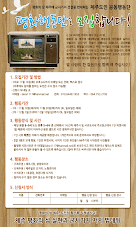
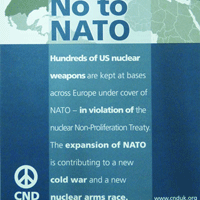

![[Translation]Statement against illegal inspection and unjust lay-off by the Kunsan USAFK!(Nov_2010)](http://4.bp.blogspot.com/_gnM5QlRx-4c/TOPLsVkZMqI/AAAAAAAAGZs/3YnnckIyAaY/S227/gunsan%2Bprotest.gif)
![[Translation] Korean organizations' statement against dispatching special force to the UAE on Nov.](http://4.bp.blogspot.com/_gnM5QlRx-4c/TOP95zHXlCI/AAAAAAAAGak/E0Ug1XtUFfM/S227/antiwarpeace.jpg)
![[Translation] Stop, Joining MD!: South Korean activists' statement and writing on Oct. 25, 2010](http://3.bp.blogspot.com/_gnM5QlRx-4c/TOP7Es4_2sI/AAAAAAAAGac/eWVMPD-U4p0/S227/StopMD.jpg)
![[In Update] People First, NO G-20 (Nov. 6 to 12, Korea)](http://2.bp.blogspot.com/_gnM5QlRx-4c/TJd53XBzHlI/AAAAAAAAFQo/ldO9JPE3eqo/S227/left21_G20.jpg)
![[International Petition] Stop US helipad plan in Okinawa to save great nature](http://4.bp.blogspot.com/_gnM5QlRx-4c/TKC2AHRNzBI/AAAAAAAAFUo/yGWXODTw_uM/S227/yanbaru_w.jpg)

![[Global Network] against the first launch of Quasi-Zenith Satellite, Japan, on Sept. 11, 2010](http://4.bp.blogspot.com/_gnM5QlRx-4c/TIowa1boy4I/AAAAAAAAFDI/82rAi98uq-c/S227/Qzss-45-0_09.jpg)

![[In update] Some collections on the Koreans’ protests against the sanction & war on Iran](http://4.bp.blogspot.com/_gnM5QlRx-4c/TJMvke6t8zI/AAAAAAAAFO4/tamQ8LUnOOA/S227/No+Sanction+on+Iran.jpg)
![[Three International Petitions] to End the Korean war and peace treaty(or peace resolution)](http://1.bp.blogspot.com/_gnM5QlRx-4c/THef7bzWxYI/AAAAAAAAE44/wwdzSDfYhdw/S227/border.jpg)
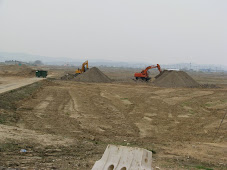


![[Collection of Documents] No Base Learning and Solidarity Program_Korea(June 14 to 20, 2010)](http://1.bp.blogspot.com/_gnM5QlRx-4c/TCTvVuN8NeI/AAAAAAAAEek/8vBJVaHdk10/S227/No-Base-banner.jpg)
![Site Fwd:[John Hines] A U.S. Debate coach’s research trip on the Issues of Korea](http://3.bp.blogspot.com/_gnM5QlRx-4c/TINCO36mzzI/AAAAAAAAE_w/Rds12NcBOXM/S227/Jeju-Peace-Tour.jpg)


![[News Update] Struggle Against the Jeju Naval Base since Jan. 18, 2010](http://1.bp.blogspot.com/_gnM5QlRx-4c/S1vvWaP25uI/AAAAAAAACkg/QvpW1tgOlKM/S226/scrum1.jpg)


![[Urgent] Please spread the Letter!: There was no Explosion! There was no Torpedo! (May 26, 2010)](http://4.bp.blogspot.com/_gnM5QlRx-4c/S_9JmsKEU7I/AAAAAAAAEP8/sAWjSPqxzUI/S227/grounded.jpg)
![Text Fwd: [Stephen Gowans]The sinking of the Cheonan: Another Gulf of Tonkin incident](http://1.bp.blogspot.com/_gnM5QlRx-4c/TAL_FtYKQ-I/AAAAAAAAERE/NEEMijiEcRM/S227/lee-myung-bak.jpg)
![[Japan Focus]Politics in Command: The "International" Investigation into the Sinking of the Cheonan](http://1.bp.blogspot.com/_gnM5QlRx-4c/TBMJ2syJzyI/AAAAAAAAEZU/uTYZccU5vyk/S227/wen_jiabao_and_lee_myungbak.png)
![[Japan Focus] Who Sank the SK Warship Cheonan? A New Stage in the US-Korean War and US-China](http://2.bp.blogspot.com/_gnM5QlRx-4c/S_iQ2vE5ZpI/AAAAAAAAEOU/Oo1SPcAe8FE/S227/buoy_map.gif)
![[Updated on 12/13/10] [Translation Project] Overseas Proofs on the Damages by the Military Bases](http://4.bp.blogspot.com/_gnM5QlRx-4c/S-qSj59gPLI/AAAAAAAAEGM/mwjlFtPE-jo/S227/missile.jpg)
![[International Petition] Close the Bases in Okinawa](http://3.bp.blogspot.com/_gnM5QlRx-4c/S8-z3DYNwNI/AAAAAAAADo4/OswTSchK09M/S227/2.jpg)

![[In Update]Blog Collection: No Korean Troops in Afghanistan](http://4.bp.blogspot.com/_gnM5QlRx-4c/SwnlLD9IewI/AAAAAAAAB9E/oUPssnpNidA/S226/No-Troops-to--Afghanistan.jpg)


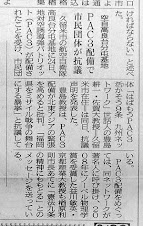

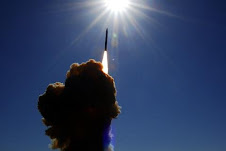






No comments:
Post a Comment